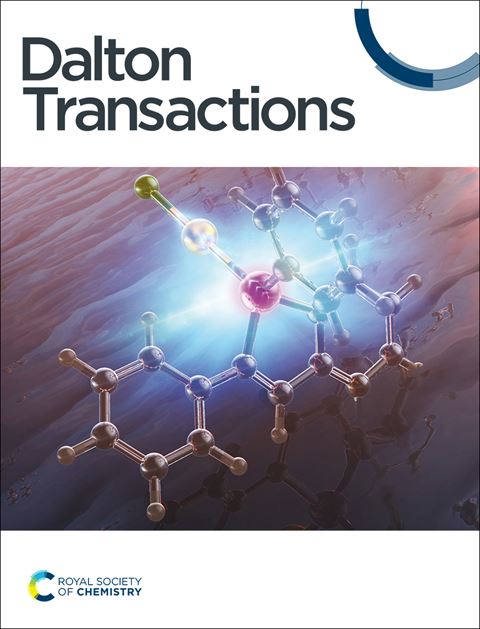亚马逊高岭石合成铁分子筛去除亚甲基蓝:吸附及光催化活性
IF 3.5
3区 化学
Q2 CHEMISTRY, INORGANIC & NUCLEAR
引用次数: 0
摘要
分子筛由于其独特的结构特征,如均匀的孔径和路易斯酸,对有机底物具有较高的吸附能力和催化活性。然而,它们固有的UV-Vis透明度(λ >;240 nm)限制了它们作为光催化剂的功效。这一限制可以通过在其框架中加入过渡金属或在其多孔结构中封装半导体来解决。在这项研究中,通过天然亚马逊高岭石的碱性熔融合成了Fe-沸石,然后用Fe(NO₃)₃的不同载荷的Fe³⁺进行水热处理。在没有Fe(NO₃)₃的情况下,在这些实验条件下得到了LTA沸石。然而,Fe(NO₃)₃的引入导致了cancrinite (CAN)沸石的形成,这表明硝酸盐阴离子起到了结构导向剂的作用。XRD和Mössbauer光谱分析证实FeZEO-3和FeZEO-5中存在掺铁的癌质岩和分散的磁赤铁矿。铁分子筛吸附亚甲基蓝的最佳描述是Langmuir等温模型,并遵循准二级动力学。铁含量从0增加到5% (w/w),光活性增强,带隙能量从3.21 eV降低到2.93 eV,最后降低到2.53 eV。在光催化过程中,由于FeZEO-5材料去除了高达90%的染料,羟基化亚甲基蓝中间体的观察进一步支持了这种改进的光活性。本文章由计算机程序翻译,如有差异,请以英文原文为准。
Fe-zeolites synthesis from Amazonian kaolinite for methylene blue removal: adsorption and photocatalytic activity
Zeolites exhibit high adsorption capacities for organic substrates and catalytic activity owing to their unique structural features, such as uniform pore sizes and Lewis acidity. However, their inherent UV-Vis transparency (λ > 240 nm) limits their efficacy as photocatalysts. This limitation can be addressed by incorporating transition metals into their framework or encapsulating semiconductors within their porous structures. In this study, Fe-zeolites were synthesized through alkaline fusion of natural Amazonian kaolinite, followed by hydrothermal treatment with varying Fe³⁺ loadings from Fe(NO₃)₃. In the absence of Fe(NO₃)₃, LTA zeolite was obtained under these experimental conditions. However, the introduction of Fe(NO₃)₃ led to the formation of cancrinite (CAN) zeolite, suggesting that nitrate anions acted as a structure-directing agent. XRD and Mössbauer spectroscopy confirmed the presence of Fe-doped cancrinite and dispersed maghemite within FeZEO-3 and FeZEO-5. Methylene blue adsorption onto Fe-zeolites was best described by the Langmuir isotherm model and followed pseudo-second-order kinetics. An increase in iron content from 0 to 5% (w/w) led to enhanced photoactivity, as evidenced by a decrease in band gap energy from 3.21 eV to 2.93 eV and finally to 2.53 eV. This improved photoactivity was further supported by the observation of hydroxylated methylene blue intermediates during the photocatalysis process as the material FeZEO-5 removed up to 90% of the dye.
求助全文
通过发布文献求助,成功后即可免费获取论文全文。
去求助
来源期刊

Dalton Transactions
化学-无机化学与核化学
CiteScore
6.60
自引率
7.50%
发文量
1832
审稿时长
1.5 months
期刊介绍:
Dalton Transactions is a journal for all areas of inorganic chemistry, which encompasses the organometallic, bioinorganic and materials chemistry of the elements, with applications including synthesis, catalysis, energy conversion/storage, electrical devices and medicine. Dalton Transactions welcomes high-quality, original submissions in all of these areas and more, where the advancement of knowledge in inorganic chemistry is significant.
 求助内容:
求助内容: 应助结果提醒方式:
应助结果提醒方式:


